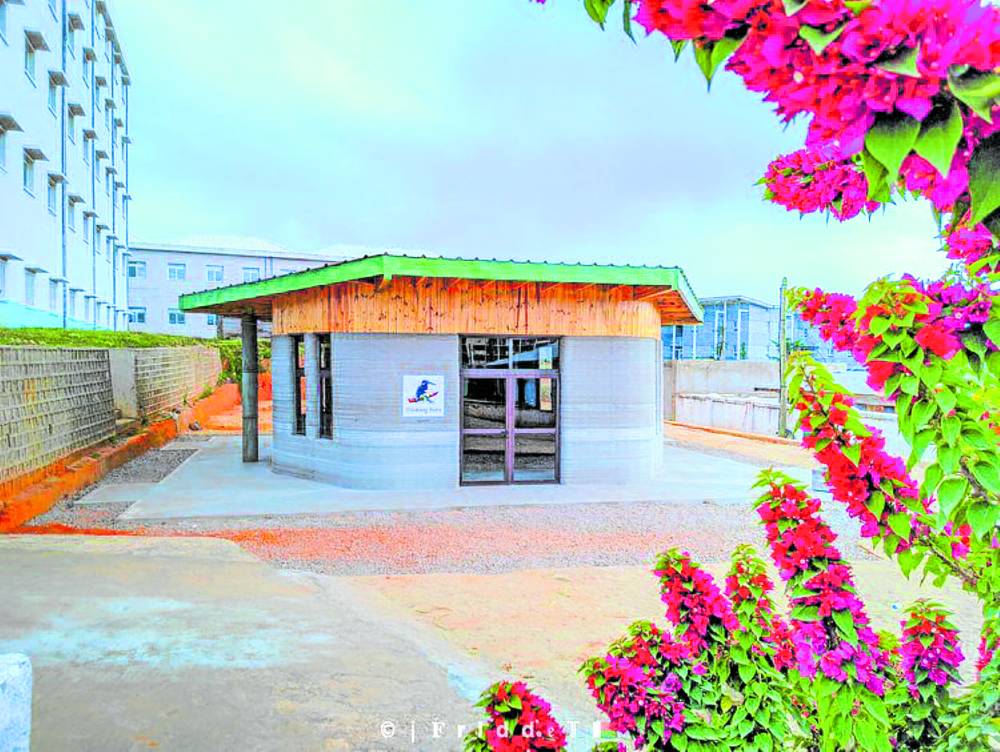From 3D printed homes to biophilic buildings, 2023 has a lot of exciting things in store for the world of architecture. As technology continues to advance, developments launched in recent years promise innovative projects for our benefit this 2023. Here are a few architectural innovations that are set to change the landscape this year, both here and abroad.

The group Thinking Huts was able to produce its first 3D-printed school prototype in 2022, paving the way for future similar projects in Africa.
3D printed homes
The concept of 3D printing is not a new technology. Having been around since the 1980s, the process involves a machine creating a complex shape or figure out of materials fed into its system such as thermoplastics.
While the technology has delighted a lot of sculpture enthusiasts and model makers, it has also begun transforming the lives of homeowners. It is being used to create affordable housing using various materials, from concrete to soil-rice husk mixtures.
Some of the most innovative creations involving 3D were built in recent years. In 2018, a 3D printed house was created in Nantes, France using polyurethane walls. Italy built a more sustainable counterpart the same year, combining agricultural and natural materials and 3D printing them to create a house. In 2020, India saw its own prototype, built using concrete 3D printed offsite combined with a traditional foundation. Germany also built one in the same year, following standard building regulations.
The technology of 3D printing paves the way for more quality, affordable homes. It allows builders to erect homes in a hundred hours or less with costs as low as $1,000 (approximately P54,000). This helps communities create housing that is more accessible to everyone.
This 2023, several 3D-printed projects are set to be constructed. These include a school, community of 100 houses and even a tiny home. While walls continue to be the predominant component made from 3D printing, there’s no telling what else could be constructed in the future with the rapid development of the technology.
Hopefully, the innovative equipment will be able to reach the Philippine shores to innovate our housing industry.
2023 is set to see more spaces featuring urban elements coming together with nature.
Biophilic structures
Many of us now are more attentive to our surroundings. New homeowners are more invested in biophilic or nature-inspired dwellings as these often bring about more natural ventilation and healthy daylight.
This year would most probably see the continued preference for natural elements in our homes. As proven by the consistent demand for elements such as water, plants and wind in high-end homes, biophilia is here to stay.
In the words of the Irish designer Clodagh, “Biophilic design is a movement today, not a trend”. Luxe properties across the Philippines and other countries now feature more outdoor-indoor rooms, skylights, pocket gardens and nature-filled areas. These have been proven to improve moods, encourage healthy living, and alleviate stress.
Here in our country, be prepared to see biophilic elements in upcoming condominiums and office buildings. While we continue to grapple with limited land in the metropolis, more developers are recognizing the demand for biophilic features and are exerting effort to meet these in style. It’s exciting to see urban and natural elements fuse together in the homes of tomorrow, and 2023 just might see the most innovative designs featuring these come to light.
Solar panels lead the sustainability movement when it comes to energy saving in the Philippines.
Solar-powered dwellings
Solar power may have been around for quite some time, but this year, more people are expected to avail themselves of this sustainable system.
As prices of commodities and utilities continue to rise in the Philippines, people are now looking toward alternative sources of energy for their daily consumption. Solar power is one of the best options available today as it utilizes an abundant resource that is free and renewable.
Thankfully, 2023 is set to see numerous steps toward the improvement of solar technology in the Philippines.
Acen Corp., one of the local providers of this renewable resource, is expecting to generate at least 700 megawatts of combined solar and wind energy through its facilities this year. KFC Philippines, a popular fast food chain, is also committed to producing 54 solar-powered branches this year. Other restaurants are also following suit in the race to lower their carbon footprints. This will not only translate to less operation costs but better environment impact for many businesses.
The company Cubo.ph offers stylish modular tiny homes that are light on the pocket but offer quality in terms of construction.
Tiny houses
Inspired by shows such as Tiny House Nation and Tiny House World, many Filipinos are putting on their creative caps to create their own mini-houses. While some of the homes serve as auxiliary spaces in the backyard, many are already being utilized as primary residences. This growing movement translate to higher savings in terms of construction, operations and maintenance.
Most tiny houses in the Philippines are created using recycled shipping containers and modular house kits. Companies offering ready-made homes are now in the country, allowing homeowners to readily purchase their homes for a fraction of the price of traditionally-built structures. There are those that also utilize more sustainable materials, such as engineered bamboo.
The creation of these homes not only translate to savings in terms of cost, but they also help minimize land use per family. Hopefully, these homes can be utilized to alleviate the housing problems of our country and provide better shelter for all.
Sources:
https://all3dp.com; https://www.architecturaldigest.com; photo via https://www.thinkinghuts.org; https://ieefa.org; 2023 Sarangani Smart House model via https://cubo.ph; Marcus Ireland and Manny via pexels.com